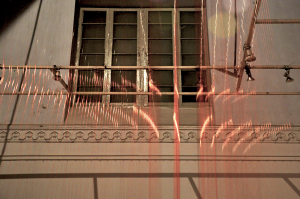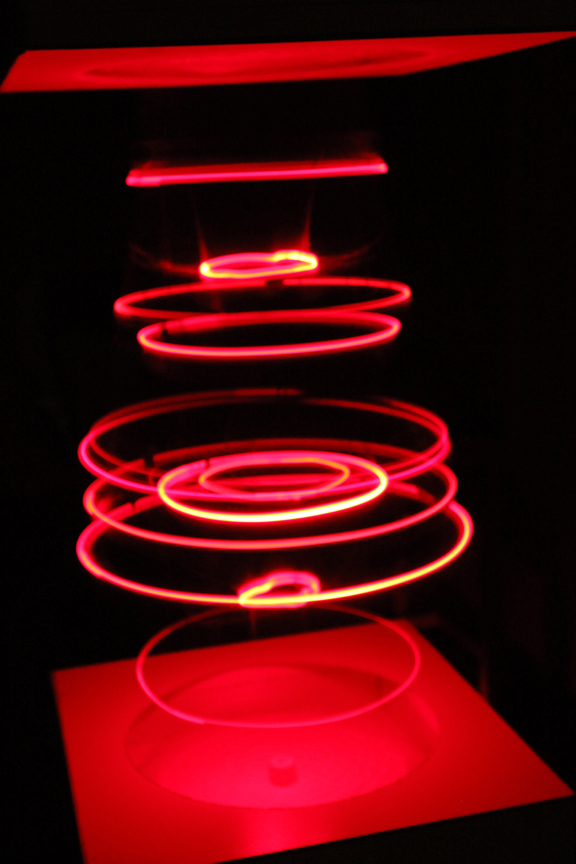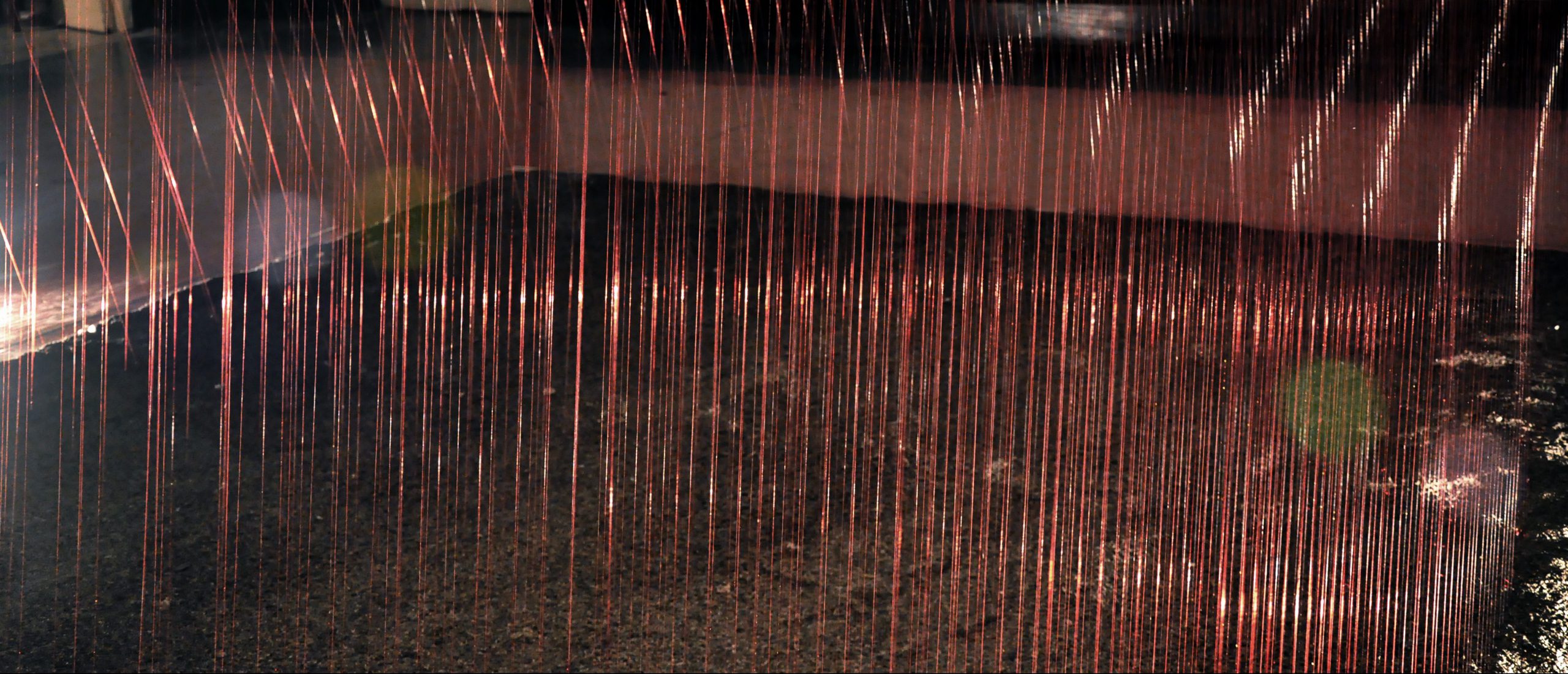These works were created as a part of the artist’s bachelor thesis in National College of Arts, Lahore Pakistan. The works were based on the artist’s study of light and how different factors can affect the way one perceives light such as psychedelic drugs and other forms of stimulants. The artist endeavors to recreate these experiences via her installations by focusing attention of the observer on the magical aspect of light that mesmerizes whereas the other parts are hidden to give the feeling of ecstasy without alteration of senses. Hence, through these works, the artist tries to convey the message that by changing the way one looks at things around him, the ordinary things can become extraordinary.
Perceiving Light
Get mesmerized!
Bachelors Thesis Project 2014,
presented at the Zahoor ul Akhlaq Gallery in National College of Arts, Lahore, Pakistan.
presented at the Zahoor ul Akhlaq Gallery in National College of Arts, Lahore, Pakistan.
This Site specific installation was created keeping in mind the space of the Zahoor-ul-Akhlaq Gallery. The installation comprises of 4500 strands of maroon Polyester fibers dyed to match the floor of the space so that they appear to come out of nowhere and blend seemlessly with the space. The height of this installation was 42 ft. and was created in 7 days working on high scaffolding. The strands of polyester were numbered and attached to a metal frame that goes on the skylight at the ceiling. Each strand was dropped from the top and attached to the bottom metal frame diagonally. The strands were illuminated from different angles. The reflection of light changes as one moves around the installation of follows the reflection. Although static, this installation appears kinetic.
Kinetic Sculpture
3 Kinetic Sculptures were also part of the exhibition. One was created with a white LED, the other had multiple red LEDs attached to polyester fiber fixed to two motors which move at fast speed to give the illusion of circular loops when seen with the naked eye. The third kinetic sculpture consisted of randomly arranged polyester fibers fixed also to two adjacent motors moving in a clockwise direction. A light was directed at the movement of the strands making them appear like orbits of an atom in which electrons move. The space was left dark for these effects to shine through.
Light Pathways
These pathways were inspired by the way headlights from cars reflect on the surface of the road after rain. 250 LED lights were programmed to recreate that experience in a 35ft. long tunnel where vision was directed only to the surface where the play of light could be observed.




